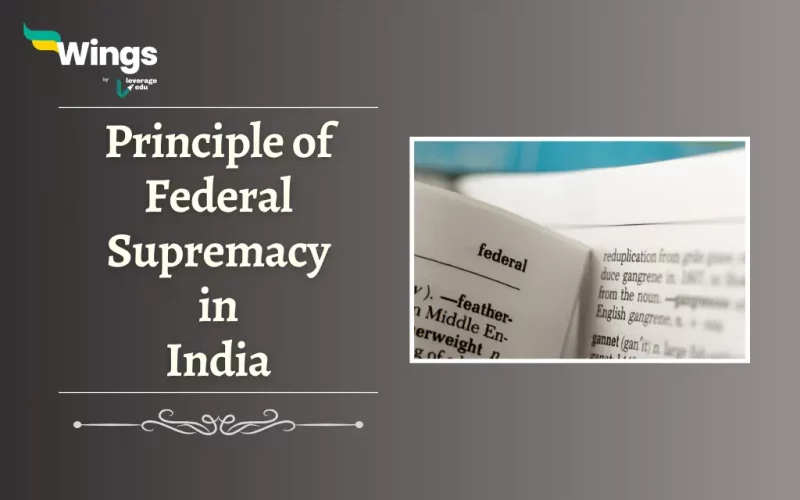We know that the Union has more powers than the State in terms of execution and legislation. In cases of conflict between the two, the Supreme Court of India has all the rights to either use the ‘Principle of Federal Supremacy,’ or the ‘Principle of Harmonious Construction.’ In layman’s language, the division of power is a basic feature of federalism. The legislation of India, under the Indian Constitution through the seventh schedule is divided into three folds- Union List, State List, and Concurrent List. However, sometimes conflicts develop in the categorization of these three, for instance, water is a subject of the State’s control but if the Union plans to take over this subject, then the court has developed these two major principles for it.
Also Read: What is the Doctrine of Colourable Legislation?
What is the Principle of Federal Supremacy?
Furthermore, Article 246 of the Indian constitution, states that a scheme of hierarchy with a union list.
- The Central government holds primary legislative authority if a statute encompasses provisions falling within both State and Union jurisdiction.
- The State and Concurrent lists are under the Union list.
- So the ‘Federal Supremacy’ is a trump card for the Supreme Court which can invoke this principle if efforts to resolve conflicts.
Also Read: Devolution of Powers and Finances up to Local Levels
Federal Supremacy Case
In the 1963 West Bengal case, the court assessed Parliament’s legislative competence to enact laws for the compulsory acquisition of land and other properties owned by the State. Here we see the use of the Principle of Federal Supremacy.
- It ruled that both the legislative and executive powers of the States are subject to the supreme powers of the Union.
- Additionally, the Supreme Court stated that India’s constitutional structure is centralized, with the States occupying a subordinate position relative to the Centre.
FAQ
Finding a middle way at times of conflict between the executive powers of India is a Harmonious construction.
Checks and balances are the system to guarantee that the 3 organs of parliament perform well. They are the Judiciary, the Legislature, and the Executive.
In India, there is no strict separation of power, however, practices like checks and balances are followed to ensure division.
Related Blogs
This is all about the Principle of Federal Supremacy. Moreover, you may even read more blogs and empower yourself with knowledge regarding Civics and Polity!
 One app for all your study abroad needs
One app for all your study abroad needs













